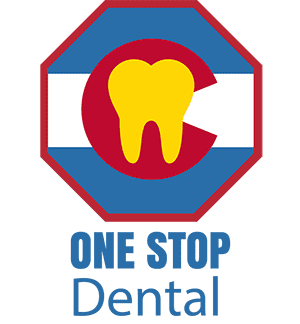Have you ever wondered what to do in a broken tooth emergency? A broken tooth can happen unexpectedly and typically requires prompt attention to address discomfort and prevent further issues. Understanding the general steps to take can help manage the situation until professional care is obtained.
Broken Tooth Emergency: Causes of Broken Teeth
A broken tooth emergency can occur due to various reasons, often catching individuals off guard. Common causes include biting down on hard foods, accidents involving a blow to the mouth, or even dental decay weakening the teeth over time. Such incidents can lead to significant discomfort and necessitate prompt attention to prevent further complications.
In cases where a tooth is not only broken but also knocked out, understanding the appropriate steps to handle such situations is crucial. For detailed guidance, refer to Knocked Out Tooth Steps for Immediate Care. It’s important to stay informed about these emergencies as they can significantly impact dental health.
Types of Tooth Fractures
In a broken tooth emergency, understanding the type of fracture can be crucial. There are several common types of tooth fractures. Craze lines are tiny cracks that only affect the outer enamel, typically causing no pain. More severe are fractured cusps, which usually occur around a dental filling. They don’t generally damage the pulp of the tooth but might require further dental care. Cracks that extend into the gum line require immediate attention as they can lead to greater issues if not assessed promptly.
Vertical root fractures are cracks that begin at the root and move upward, often going unnoticed until the surrounding bone and gum become infected. Split teeth, which are the result of an untreated cracked tooth, involve a crack with distinct segments that can sometimes be separated. Identifying the type of fracture is essential in a broken tooth emergency to manage the situation effectively. For immediate care, consider visiting an Emergency Dentist in Colorado Springs.
Symptoms of a Broken Tooth
Recognizing the symptoms of a broken tooth is crucial during a broken tooth emergency. Common signs include sudden pain when biting down, sensitivity to hot or cold foods and drinks, and visible cracks or chips in the tooth. Some individuals might also notice swelling around the affected area or bleeding from the tooth or gums. These symptoms can vary in intensity depending on the severity of the break.
Immediate Actions for Broken Teeth
In the event of a broken tooth emergency, it is common for individuals to seek information on the general steps that should be considered. Understanding the basic nature of such incidents can provide clarity on the situation. For further details, consider visiting One Stop Dental, your Colorado Springs Dentist.
Risks of Ignoring a Broken Tooth
Ignoring a broken tooth can lead to several complications that may exacerbate the situation. A broken tooth emergency not addressed promptly can result in infection, further damage to the tooth and surrounding teeth, and potentially severe pain. The damage might also affect the nerve, leading to a need for more complex dental procedures. Additionally, a broken tooth can impact overall oral health and, in some cases, may affect the alignment of your teeth and jaw over time.
Long-Term Effects of Untreated Breaks
Ignoring a broken tooth emergency can lead to severe long-term consequences. If left untreated, the damage can extend beyond the tooth itself, potentially causing infection, loss of the tooth, and even affecting jawbone integrity. This neglect may result in costly treatments down the line, such as root canals, dental crowns, or implants. Moreover, untreated breaks can lead to misalignment of your teeth due to shifting, further complicating your oral health. Prompt treatment is crucial to prevent these serious outcomes.
Understanding Tooth Anatomy and Breaks
In a broken tooth emergency, understanding the structure of your teeth can be crucial. Each tooth consists of an outer hard enamel, a softer dentine layer, and an inner pulp containing nerves and blood vessels. Breaks can vary from minor chips to severe fractures reaching the pulp, which might require immediate dental intervention to prevent further damage and manage pain. Recognizing the type of break can help in effectively communicating with your dentist during a broken tooth emergency.
Psychological Impact of Tooth Damage
Experiencing a broken tooth emergency can have significant psychological effects, including anxiety, embarrassment, and a decrease in self-esteem. The visibility of tooth damage, especially when it occurs at the front of the mouth, can lead to social withdrawal or reluctance to participate in social activities. Prompt treatment is essential not only for physical repair but also for alleviating the emotional distress associated with visible dental trauma.
General Statistics on Dental Emergencies
In the United States, dental emergencies account for a significant number of emergency room visits each year, with a broken tooth emergency being one of the most common issues. Studies reveal that approximately one in six Americans suffers from a dental emergency annually, and about 20% of these are due to severe tooth damage, including broken or fractured teeth. This statistic underscores the importance of understanding how to handle a broken tooth emergency to prevent further complications and ensure timely treatment.
Conclusion
For a broken tooth emergency, call 719-447-1199 or read our reviews on Google Maps.


